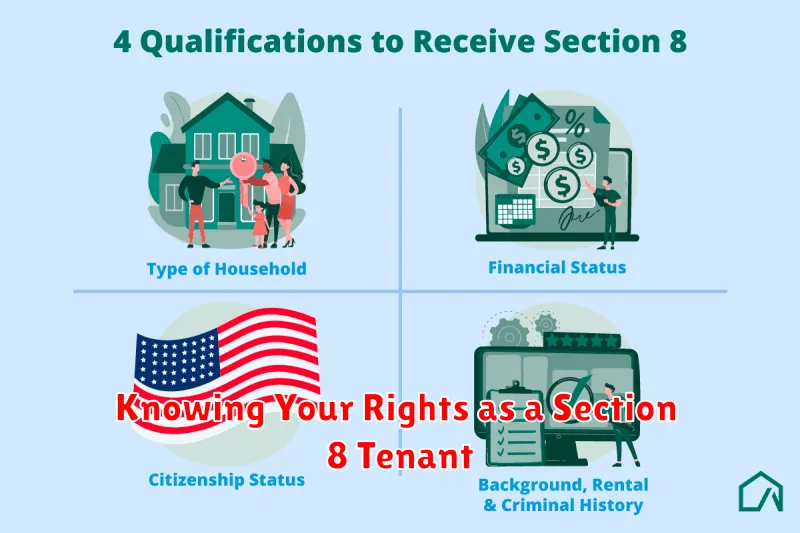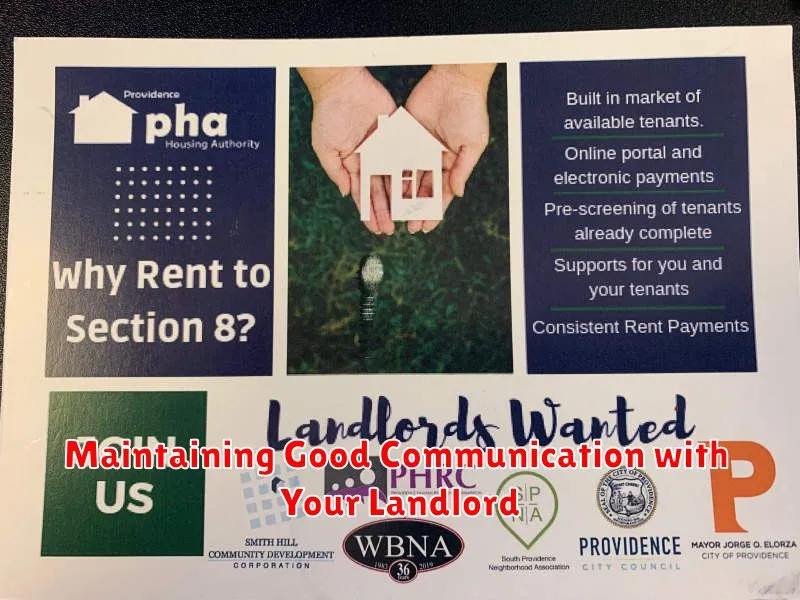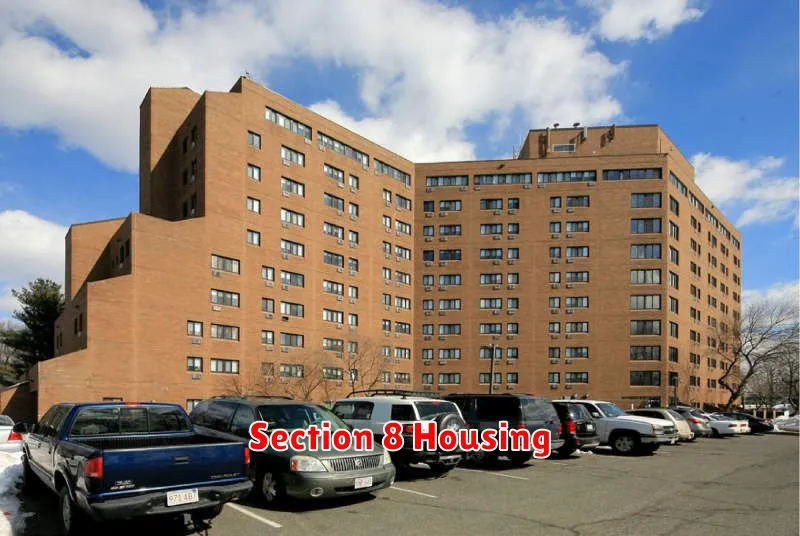Are you searching for an apartment but struggling to find one that accepts Section 8 vouchers? Finding an apartment that accepts Section 8 can be a difficult task, but it’s not impossible. This article will provide you with tips for finding apartments that accept Section 8. We’ll cover everything from understanding the program to navigating the search process. Whether you’re a first-time renter or simply need a new place, this guide will equip you with the knowledge and tools to succeed in your search. Let’s dive in and discover how you can find a safe and affordable home with the help of Section 8.
Understanding the Section 8 Program
The Section 8 program, officially known as the Housing Choice Voucher Program, is a federally funded program that helps low-income families, individuals, and seniors pay for housing. It does this by providing rental assistance in the form of vouchers.
The Section 8 voucher program operates through a partnership between the federal government, local public housing authorities (PHAs), and participating landlords. Here’s how it works:
- Applicants are screened based on income and family size.
- Approved applicants receive a voucher with a set amount of rental assistance.
- Voucher holders then search for rental units in the private market, which must meet program standards.
- Landlords who agree to participate in the program receive a portion of the rent directly from the PHA, with the tenant paying the remaining balance.
The Section 8 program is a valuable resource for many individuals and families who struggle to afford safe and decent housing. However, finding landlords who accept Section 8 vouchers can be challenging. That’s why it’s important to be aware of the program’s requirements and to utilize resources available to find suitable housing.
Searching for Section 8 Listings
Finding apartments that accept Section 8 vouchers can be a challenging process. Many landlords are hesitant to accept vouchers, leading to limited options and increased competition. Luckily, there are several resources available to help you navigate this process and find suitable housing.
The most important step is to contact your local Public Housing Authority (PHA). They can provide you with a list of landlords who participate in the Section 8 program. They may also have a waiting list for apartments, so it’s important to inquire about that as well.
In addition to your PHA, you can also search online for Section 8 listings. Websites like Apartments.com, Zillow, and Craigslist often have filters for Section 8-approved properties. You can also use search engines like Google to look for “Section 8 apartments near me” or “Section 8 landlords in [your city/state].”
When searching for listings, it’s crucial to verify that the property is indeed Section 8-approved. Ask the landlord or property manager directly and check if they are listed with your PHA. You can also ask about their waiting list, availability, and any specific requirements for Section 8 tenants.
Remember to be patient and persistent in your search. It may take time to find a suitable apartment, but with determination and the right resources, you can locate housing that meets your needs and accepts Section 8 vouchers.
Contacting Landlords and Property Managers
When searching for Section 8-approved apartments, contacting landlords and property managers directly is crucial. Many landlords don’t advertise their participation in Section 8 programs, so you’ll need to be proactive in your search.
Here are some tips for contacting landlords and property managers:
- Be polite and professional. Introduce yourself and clearly explain that you are looking for an apartment that accepts Section 8 vouchers.
- Ask specific questions about the landlord’s participation in Section 8 programs, such as whether they have any vacancies, the types of units they accept Section 8 for, and their application process.
- Be prepared to provide your Section 8 voucher information, including your voucher number and the amount of your rental assistance.
- Follow up with a thank you note to express your gratitude for their time and consideration.
Preparing Your Section 8 Documentation
Once you’re ready to start your apartment search, it’s important to have all of your Section 8 documentation in order. This will make the process much smoother and help you secure an apartment quickly. Here’s what you’ll need:
- Voucher: This is the most important document, as it proves your eligibility for Section 8.
- Photo ID: Be sure to bring a valid government-issued ID, like a driver’s license or passport.
- Social Security Card: This is used to verify your identity and income.
- Proof of Income: Gather pay stubs, bank statements, or other documents that show your income.
- Household Size Information: Have a list of everyone who will be living in the unit, along with their ages and relationships to you.
- Contact Information for Your Case Manager: Keep their phone number and email address handy.
- Housing Choice Voucher Program Handbook: This document outlines the rules and regulations of the program.
Having all of these documents readily available will save you time and frustration when applying for apartments. It’s also a good idea to keep a copy of your documentation for your own records.
Meeting with Potential Landlords
Once you’ve found a few apartments that accept Section 8, it’s time to start meeting with potential landlords. This is your chance to ask questions, get a feel for the property, and see if it’s a good fit for you. Be sure to arrive on time and dress professionally. Be prepared to discuss your housing needs, income, and any other relevant information. It’s important to be honest and upfront about your situation.
Don’t be afraid to ask questions about the property, the lease agreement, and the landlord’s policies. You want to make sure you understand everything before you sign anything. It’s also a good idea to take notes during the meeting so you can remember everything that was discussed.
Landlords may have questions for you as well, so be prepared to answer them honestly and thoroughly. This is a chance to make a good impression and show the landlord that you’re a responsible tenant.
After meeting with a few potential landlords, you’ll have a better understanding of your options. You can then compare the different properties and choose the one that best meets your needs.
Understanding Inspection Requirements
When you’re looking for an apartment that accepts Section 8, it’s important to understand the inspection requirements. These inspections are conducted by the Housing Authority to ensure that the unit meets certain standards of safety and habitability. Understanding these requirements can help you find an apartment that is both suitable for your needs and meets the requirements of the program.
Here are some common inspection requirements:
- Safe and working appliances: This includes the stove, oven, refrigerator, and dishwasher.
- Proper ventilation: The apartment must have adequate ventilation in all rooms, including bathrooms and kitchens.
- Working smoke detectors: Smoke detectors are required in every apartment, and they must be in working order.
- Proper lighting: All rooms must have sufficient lighting.
- Clean and sanitary conditions: The apartment must be free from any hazards or conditions that could pose a health risk.
It’s essential to familiarize yourself with these inspection requirements when searching for a Section 8-approved apartment. This can help you narrow down your search and avoid wasting time on apartments that are unlikely to be approved.
Following Up After Application Submission
Once you’ve submitted your application, it’s important to follow up to make sure it’s being processed. Here are some tips for following up:
Wait a reasonable amount of time before contacting the landlord or property manager. This is usually around 1-2 weeks, but it may vary depending on the property.
Be polite and professional when you contact them. Simply ask if your application has been reviewed and what the next steps are. You can also mention that you are very interested in the property.
Keep detailed records of when you contacted the landlord or property manager and what they said. This can be helpful if there are any delays or issues with the application process.
Be persistent but patient. It may take some time for the landlord to process your application, so don’t give up. Keep following up regularly to ensure your application is not overlooked.
If you don’t hear back after a few weeks, you can try contacting the landlord or property manager again. You can also consider submitting applications to other properties that accept Section 8.
Negotiating Lease Terms

Once you find an apartment that accepts Section 8, it’s time to negotiate the lease terms. Remember, you’re not just renting an apartment; you’re entering into a legal contract. Here are some key points to consider:
Lease length: Section 8 typically requires a 12-month lease, but you can negotiate a shorter term, especially if you’re new to the area or unsure about the neighborhood.
Rent payment: Section 8 vouchers cover a portion of your rent, but you’re still responsible for the remaining balance. Make sure the landlord agrees to accept the voucher and specifies the amount of rent you will be responsible for.
Security deposit: This is a refundable deposit that protects the landlord from damages. You can negotiate the amount of the deposit or ask for a lower deposit if you have a good rental history.
Pet policy: If you have pets, be sure to discuss the landlord’s pet policy and any applicable fees.
Utilities: Some leases include utilities in the rent, while others require tenants to pay them separately. Make sure you understand which utilities are included and which ones you’ll be responsible for.
Early termination: This clause outlines the terms for breaking your lease early. Make sure you understand the consequences of breaking your lease, including potential penalties.
It’s important to be polite and respectful during lease negotiations. You want to build a positive relationship with your landlord to ensure a smooth rental experience. Consider having an attorney review the lease agreement to protect your rights.
Knowing Your Rights as a Section 8 Tenant

As a Section 8 tenant, you have specific rights that are protected by federal law. It’s crucial to understand these rights to ensure you’re treated fairly and that you’re aware of your options.
Here are some key rights you should know:
- Right to a safe and habitable living environment: Your landlord is obligated to provide a safe and habitable living space. This includes things like functioning plumbing, electricity, heat, and safe conditions. If these are not met, you have the right to seek legal action.
- Right to privacy: Landlords are not allowed to enter your unit without your consent, except in cases of emergency or for routine maintenance. They also cannot discriminate against you based on your race, religion, national origin, disability, or family status.
- Right to a written lease: You have the right to a written lease that outlines all the terms of your tenancy. This document should include your rent amount, the length of your lease, and your responsibilities as a tenant.
- Right to reasonable notice before eviction: Landlords must provide you with proper legal notice before attempting to evict you. This notice period can vary by state, so it’s essential to know your local laws.
- Right to be free from retaliation: Your landlord cannot retaliate against you for exercising your rights, such as reporting unsafe conditions or requesting repairs.
- Right to assistance from the Housing Authority: The Housing Authority is responsible for administering the Section 8 program and can provide guidance and assistance to tenants. You can contact them for any concerns or questions regarding your rights.
Understanding your rights as a Section 8 tenant is essential for protecting your interests and ensuring a positive living experience. If you encounter any issues with your landlord or have concerns about your rights, don’t hesitate to seek legal advice or contact the Housing Authority for support.
Maintaining Good Communication with Your Landlord

While finding an apartment that accepts Section 8 is a huge step towards securing housing, remember that maintaining good communication with your landlord is crucial for a positive and long-lasting tenancy. This can be achieved through several simple practices:
Promptly respond to all communication: Whether it’s a phone call, text message, or email, always make an effort to respond promptly. This shows your landlord you are respectful of their time and the rental agreement. If there is an issue that needs addressing, be upfront about it and provide a reasonable timeframe for resolution.
Be respectful of their time and space: Landlords have their own schedules and responsibilities. Avoid unnecessary contact and ensure you are clear about the purpose of your communication before reaching out. If you need to discuss a maintenance issue, provide clear details about the problem and avoid demanding immediate action.
Openly discuss any concerns: A healthy landlord-tenant relationship relies on open communication. If you have a concern, approach it directly and respectfully. Discuss it with your landlord, working together to find a solution that benefits both parties. This approach fosters a positive relationship and ensures a smooth tenancy.
Follow the lease agreement: This is essential for maintaining a good relationship with your landlord. Adhere to the terms of the lease regarding rent payments, maintenance, and any other specified rules. Being consistent with your lease obligations builds trust and avoids potential conflicts.
Maintaining good communication with your landlord is not just about following the lease, but about building a respectful and collaborative relationship. By following these simple tips, you can ensure a positive experience for both you and your landlord, fostering a smooth and successful tenancy.
Being Prepared for the Housing Inspection
You’ve found an apartment that accepts Section 8, and the landlord has agreed to let you rent it. Now, it’s time for the housing inspection. This is a crucial step in the process, as the inspector will determine if the apartment meets the standards set by the Section 8 program. To ensure a smooth inspection and secure your new home, here are some tips on how to prepare:
Cleanliness: A clean apartment is essential. Make sure to thoroughly clean the entire unit, paying particular attention to the kitchen and bathroom. This includes scrubbing appliances, cleaning countertops, and wiping down walls and floors.
Safety: Inspectors are looking for potential safety hazards. Check smoke detectors and carbon monoxide detectors, ensuring they are functioning properly. Make sure all electrical outlets and wiring are in good condition, and address any loose or damaged flooring.
Repairs: If any repairs are needed, contact your landlord immediately. It’s important to have any issues addressed before the inspection. This will help ensure the apartment meets the Section 8 standards.
Organised: Keep your belongings organised and clear pathways throughout the apartment. The inspector needs to be able to easily access all areas of the unit.
Be Present: It’s advisable to be present during the inspection. This allows you to address any questions the inspector may have and ensure everything is in order. It also shows the landlord that you’re taking the inspection seriously.
By following these tips, you can increase your chances of passing the housing inspection and securing your new apartment. Being prepared and organised will make the process less stressful and ensure a positive outcome.

